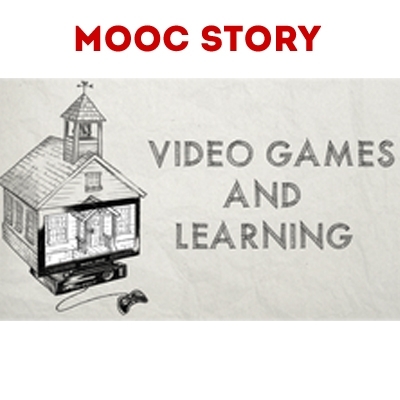What I Learned from the University of Wisconsin–Madison: Video Games and Learning MOOC story
When I first found out about the “Video Games and Learning” class, the topic of learning and developing expertise from video games reminded me of an experience my daughter had in her early teens.While participating in a BeWise event at the San Diego Zoo Institute for Conservation Research, she and other girls were taught about the comprehensive frozen DNA animal bank. The zoo research staff urged the girls to name some animals. My daughter, through her experience with the video game Zoo Tycoon, knew that only a handful of Javan Rhinos were currently in existence. The staff member was surprised and impressed to hear Javan Rhino from a young teen and admitted that indeed they did not have DNA for that animal.From this, I already knew that video games had at least a targeted capability of developing expertise, but I hadn’t ever examined why it worked. Please allow me to share some class highlights with you regarding general principles, social learning, motivation, and vision.For context the topics for the six weeks included the following:
- Introduction: Games and Learning?!
- Game Design for Learning?
- Game Culture and Learning
- Games and Cognition
- Games and Content Subject Matter
- Games and the Institution of Education
General Principles
Thirteen principles of game-based learning by J. P. Gee were strategically placed throughout the class. These thirteen principles ensure good game-based learning and are sorted into three categories:
- principles about empowered learners
- principles of good problem-based learning
- principles of creating deep understanding
For example one principle is “identity”. My notes say to have clear goals and clear roles. If the goal is to keep teammates alive then be a healer, if the goal is to fly an aircraft then be a pilot. Another principle is “pleasantly frustrating”. According to Gee, the learner should be completely engaged and at the edge of their capability.Social Learning
The social learning aspect of games was highlighted not as a place for gamers to be reclusive, rather as a place to go and hang out with friends. Games (specifically MMOs) also utilize an apprenticeship system. Players that need help are mentored by more experienced players online. This social structure can get to a level of sophistication where players become social leaders or may actually write modifications to the game.Motivation
The motivation aspect of games was highlighted as a benefit for literacy. C. Steinkuehler shared research on reading levels. Teen boys who had a reading level well below their grade level in school had no difficulty reading and comprehending game-related text that was at a reading level well above their grade level. The key was since the text was a topic of deep interest, the readers invested effort in “self-correction” and were able to comprehend the complex material.Vision
The vision aspect of games, specifically action video games, was highlighted as providing benefit to non-gaming activities. “Action video games improve low level vision, selective attention, and cognitive flexibility”. A good predictor of a doctor being a good endoscopic surgeon is playing action video games. I had read about that connection somewhere a couple years ago, so that one didn’t surprise me. Similarly, I see a skill connection between operators who play action video games and operators who control unmanned air vehicles.One class exercise was to take a peripheral processing vision test. The class results aligned with previous research results showing that action video gamers and non-gamers tracked two simultaneous objects equally well and ~nine simultaneous objects equally poorly. However, tracking three to ~eight simultaneous objects was performed significantly better by action video gamers. The research for this is to see if video game practice will help reduce traffic accidents. I see the connection. There are lots of moving objects in an intersection all vying simultaneously for the driver’s attention.
Try a Few!
The professors offered many justifications, research explanations, arguments, and references that were part of the class to respond to doubts about correlation vs. causality where appropriate. My intent with this story is simply to share my class experience and encourage you to explore a variety of games for yourself. Thank you for letting me share.

